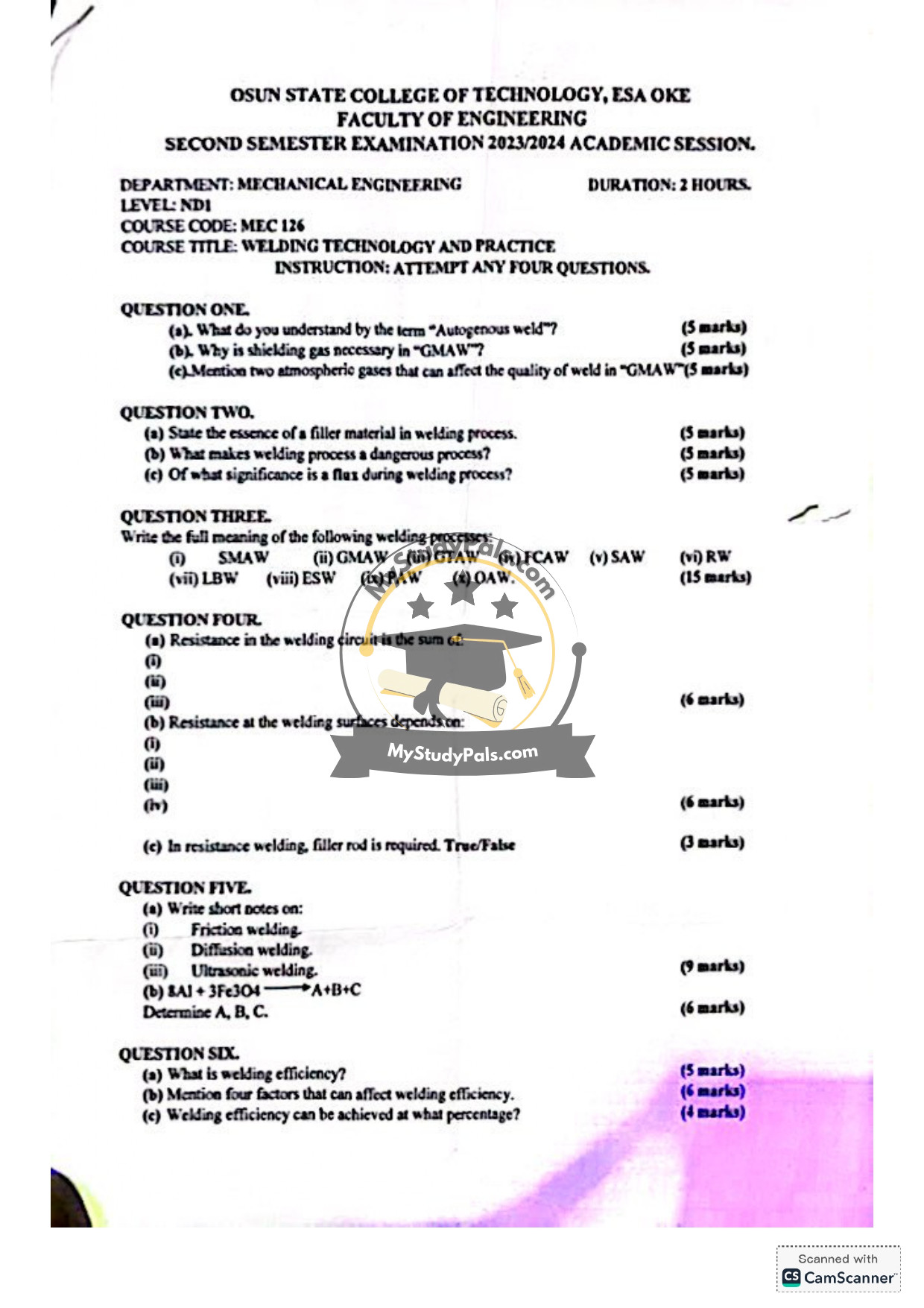ANWSER
—
Question 1:
(a) Autogenous weld refers to a welding process where no filler material is used. The weld is formed solely by melting the base metals.
(b) Shielding gas is necessary in GMAW (Gas Metal Arc Welding) to protect the molten weld pool from atmospheric gases (like oxygen and nitrogen) that can cause defects such as porosity, oxidation, or brittleness.
(c) Two atmospheric gases that can affect the quality of weld in GMAW are:
– Oxygen (O₂)
– Nitrogen (N₂)
—
Question 2:
(a) The essence of a filler material in welding is to:
– Provide additional material to fill the joint gap.
– Enhance mechanical properties (e.g., strength, ductility) of the weld.
(b) Welding is a dangerous process due to:
– Exposure to high temperatures and sparks, risking burns or fires.
– Harmful radiation (UV/IR) and fumes, which can damage eyes or lungs.
(c) The significance of flux in welding includes:
– Preventing oxidation by shielding the weld pool.
– Removing impurities and stabilizing the arc.
—
Question 3:
(i) SMAW – Shielded Metal Arc Welding
(ii) GMAW – Gas Metal Arc Welding
(iii) GTAW – Gas Tungsten Arc Welding
(iv) FCAW – Flux-Cored Arc Welding
(v) SAW – Submerged Arc Welding
(vi) RW – Resistance Welding
(vii) LBW – Laser Beam Welding
(viii) ESW – Electroslag Welding
(ix) PAW – Plasma Arc Welding
(x) OAW – Oxy-Acetylene Welding
—
Question 4:
(a) Resistance in the welding circuit is the sum of:
(i) Electrode resistance
(ii) Workpiece resistance
(iii) Contact resistance
(b) Resistance at the welding surfaces depends on:
(i) Surface cleanliness
(ii) Pressure applied
(iii) Material conductivity
(iv) Temperature
(e) False – Filler rod is not required in resistance welding.
—
Question 5:
(a) Short notes:
(i) Friction welding: Joins materials using mechanical friction and pressure, generating heat without melting.
(ii) Diffusion welding: Bonds materials by atomic diffusion under high pressure and temperature, without melting.
(iii) Ultrasonic welding: Uses high-frequency vibrations to create solid-state welds, common in thin materials.
(b) The reaction \(\text{EA1} + \text{3Fe3O4} \rightarrow \text{A+B+C}\) yields:
– A: Al₂O₃ (Aluminum Oxide)
– B: Fe (Iron)
– C: Heat (Energy)
—
Question 6:
(a) Welding efficiency measures how effectively welding energy is used to produce a sound weld, expressed as a ratio of output to input energy.
(b) Four factors affecting welding efficiency:
– Welding process used
– Operator skill
– Material properties
– Joint design and preparation
(c) Welding efficiency can be achieved at 60–95%, depending on process and conditions.
—


